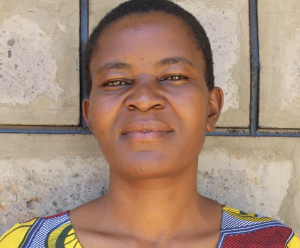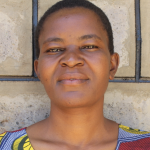The 140 community members in Machemo struggle to meet their daily water needs through Mashindu Spring, the primary water source.
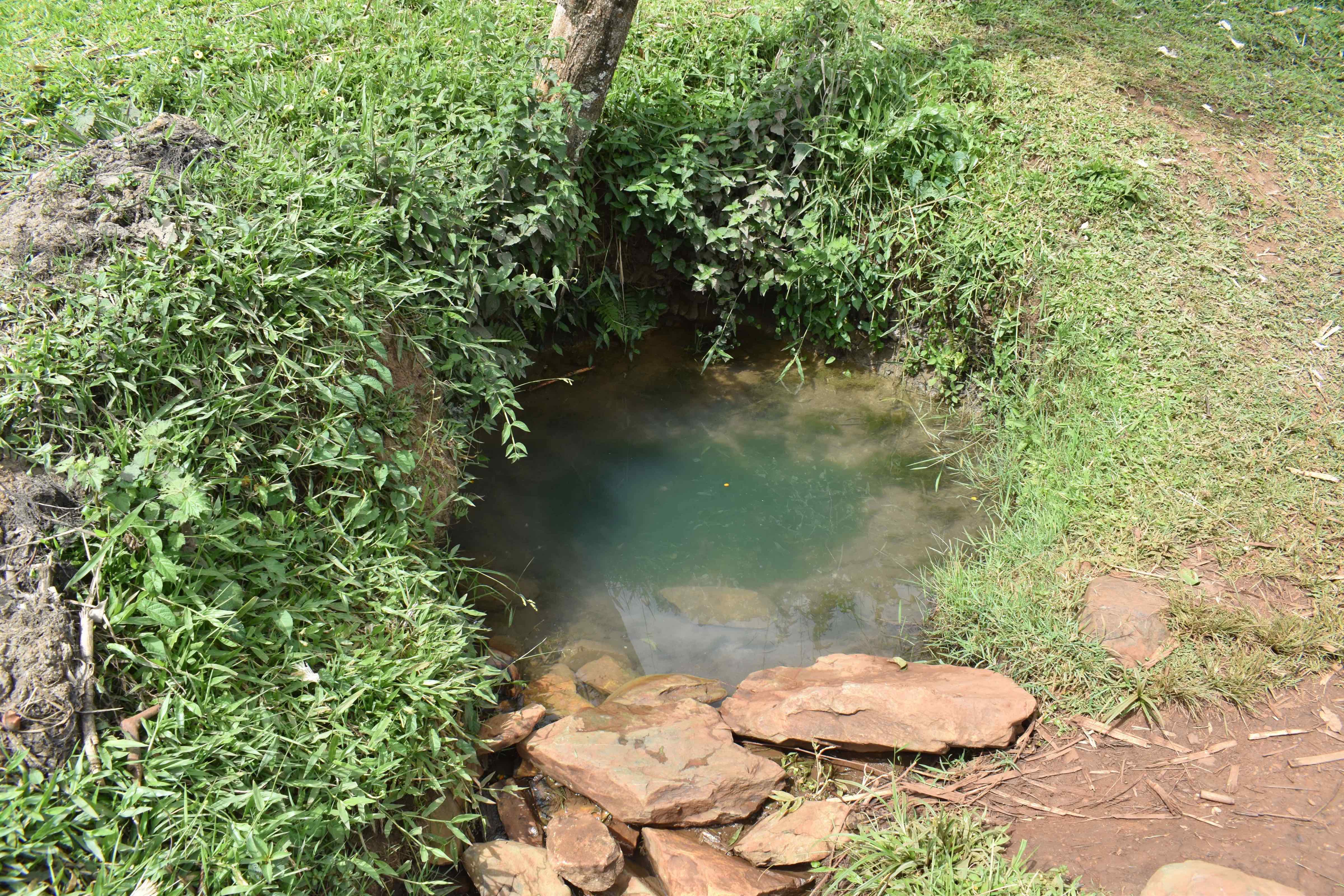
It takes a long time to collect water due to overcrowding and having to scoop water. There is a layer of algae underneath the water surface, and the water quickly becomes muddy when stirred up, and people must wait for it to settle.
The community complains about time wasted waiting to collect water at the spring due to overcrowding. Sometimes, neighbors quarrel because everyone wants to be the first to fetch water.
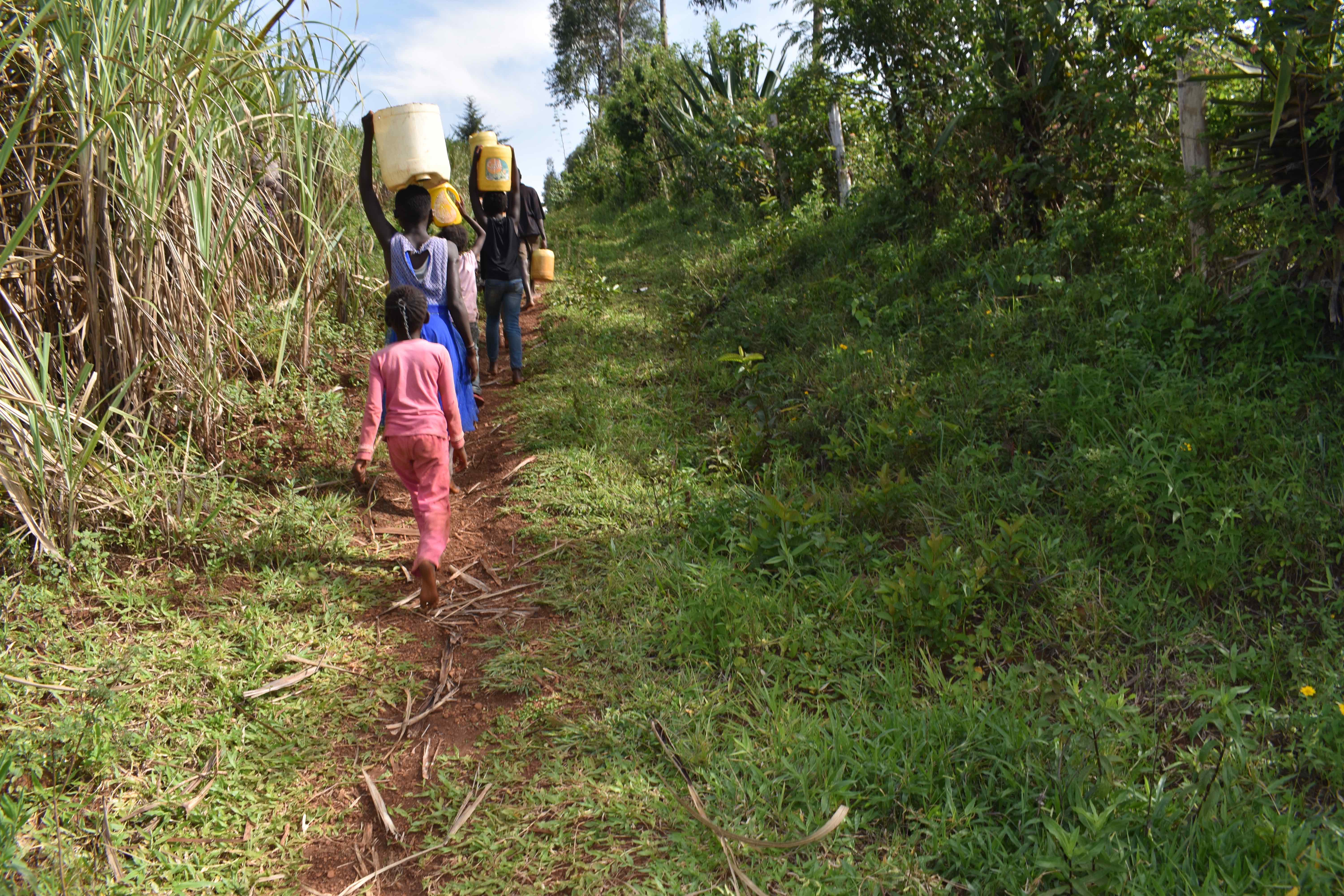
It is difficult to access the small watering hole surrounded by dirt, grass, and a few rocks. After walking down a steep, narrow pathway, they must teeter on a slippery rock and bend or crouch down to scoop water into their collection container.
Silas W., a 14-year-old student, commented, "I have dropped in my performance because every morning I have to bring water home before I go to school, and this water is affecting my health. [I] am on and off [to] the hospital. Kindly help us to have clean water."
The water is open to several types of contamination; people and dirty collection containers, trash, animal waste, and leaves from a nearby tree. Community members complain of significant illnesses as a result, such as typhoid and amoebas.
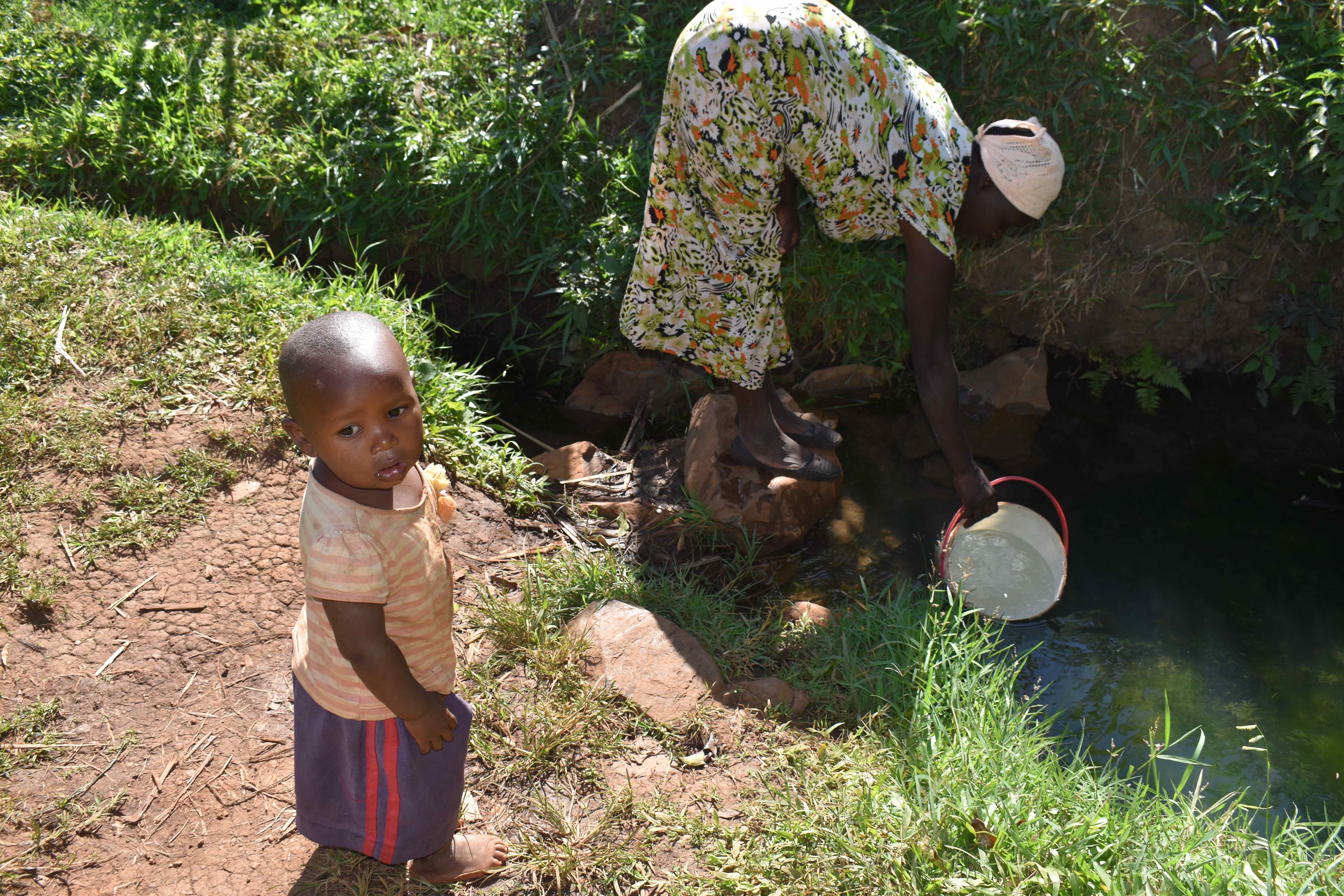
"The current water situation has affected my family because the money that was supposed to buy food for my family has been [been] diverted to medication," shared Lidia Khakali (pictured collecting water above), a local farmer.
Protecting this spring will enable community members to access clean, safe water efficiently.
What We Can Do:
Spring Protection
Protecting the spring will help provide access to cleaner and safer water and reduce the time people have to spend to fetch it. Construction will keep surface runoff and other contaminants out of the water. With the community's high involvement in the process, there should be a good sense of responsibility and ownership for the new clean water source.
Fetching water is a task predominantly carried out by women and young girls. Protecting the spring and offering training and support will, therefore, help empower the female members of the community by freeing up more of their time and energy to engage and invest in income-generating activities and their education.
Training on Health, Hygiene, COVID-19, and More
To hold trainings during the pandemic, we work closely with both community leaders and the local government to approve small groups to attend training. We ask community leaders to invite a select yet representative group of people to attend training who will then act as ambassadors to the rest of the community to share what they learn. We also communicate our expectations of physical distancing and wearing masks for all who choose to attend.
The training will focus on improved hygiene, health, and sanitation habits in this community. We will also have a dedicated session on COVID-19 symptoms, transmission routes, and prevention best practices.
With the community's input, we will identify key leverage points where they can alter their practices at the personal, household, and community levels to affect change. This training will help to ensure participants have the knowledge they need about healthy practices and their importance to make the most of their water point as soon as water is flowing.
Our team of facilitators will use a variety of methods to train community members. Some of these methods include participatory hygiene and sanitation transformation, asset-based community development, group discussions, handouts, and demonstrations at the spring.
One of the most important issues we plan to cover is the handling, storage, and treatment of water. Having a clean water source will be extremely helpful, but it is useless if water gets contaminated by the time it is consumed. We and the community strongly believe that all of these components will work together to improve living standards here, which will help to unlock the potential for these community members to live better, healthier lives.
We will then conduct a small series of follow-up trainings before transitioning to our regularly scheduled support visits throughout the year.
Training will result in the formation of a water user committee, elected by their peers, that will oversee the operations and maintenance of the spring. The committee will enforce proper behavior around the spring and delegate tasks that will help preserve the site, such as building a fence and digging proper drainage channels. The fence will keep out destructive animals and unwanted waste, and the drainage will keep the area's mosquito population at a minimum.



 Rehabilitation Project
Rehabilitation Project










